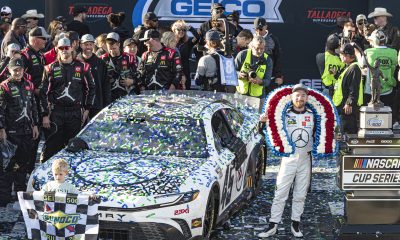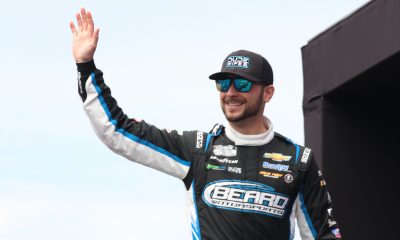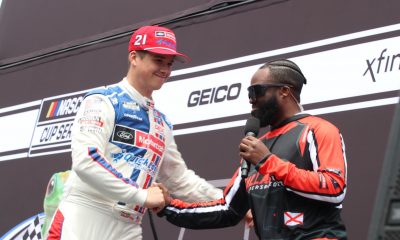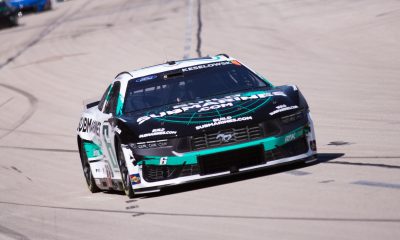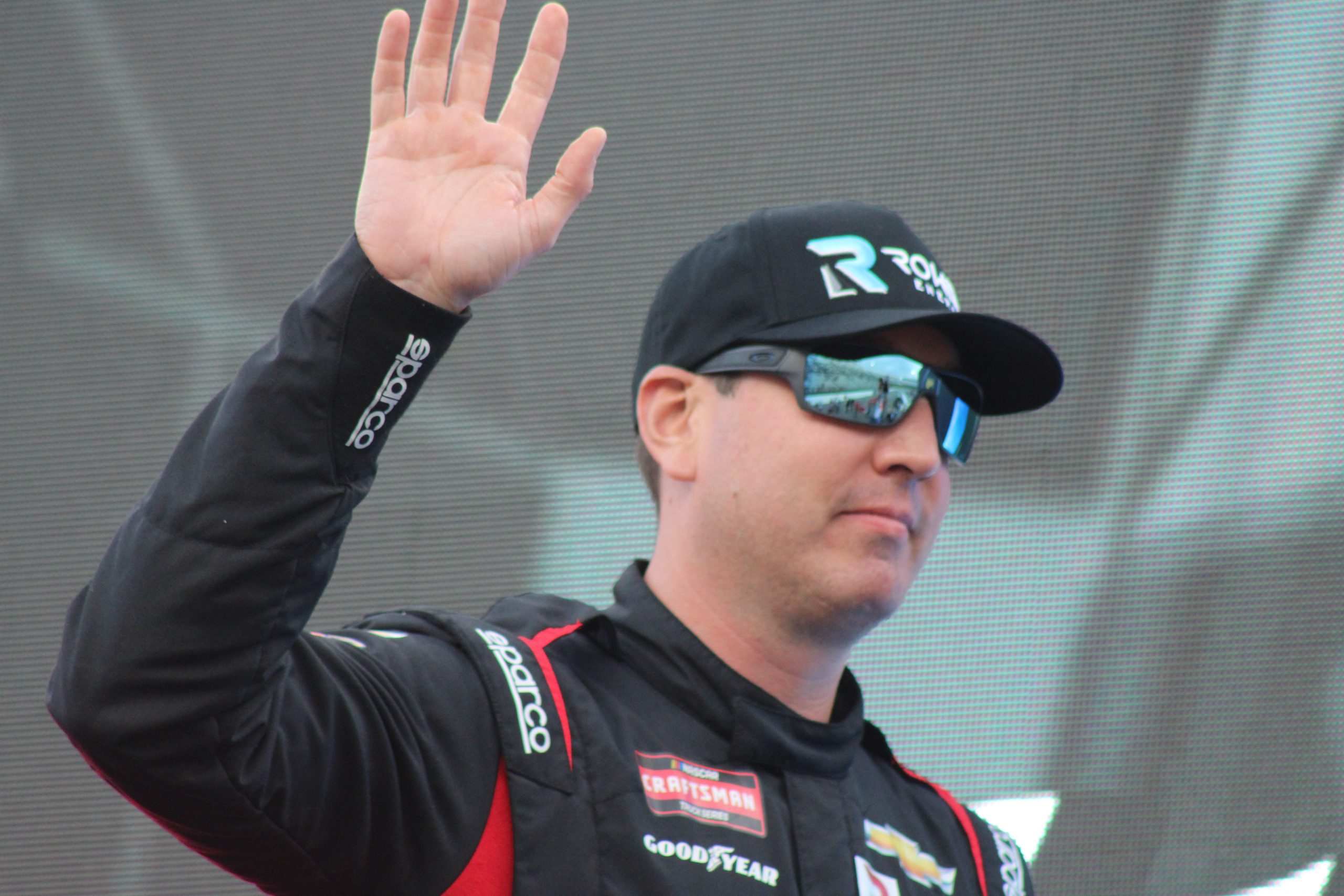
Kyle Busch said to wave your hands in the air like there are no repercussions. (Photo: Trish McCormack | The Podium Finish)
RIDGEWAY, Va. – Before Kyle Busch prepares for Sunday’s NOCO 400 at Martinsville (3 p.m. ET on FS1 and SiriusXM NASCAR Radio), he has to consider his gameplan to climb from the 17th starting position.
Then again, the two-time NASCAR Cup Series champion has a leg up on his peers when it comes to damp conditions at the 0,526-mile track. Mainly, he competed in Friday night’s NASCAR Craftsman Truck Series race, one of the more unique battles at the 0.526-mile track considering the changing conditions.
Busch expressed his disappointment in terms of the Truck race being called early due to the inclement weather. Primarily speaking, he wanted to try the wet weather tires particularly with a damp track surface.
While Chevrolet’s simulator is highly rated in terms of preparing for multitudes of scenarios, it does not mean it provides a full perspective of a situation.
“I think sometimes you have to have real-life situations in order to verify sim,” Busch said. “You can’t always trust sim or believe sim. Trust me, I’ve been doing a lot of it (laughs). I feel like we’re going to the race track to win every single weekend and we’re running 14th, so you can’t always believe what you feel on a computer.
“We could have been back on wets and just gone for it and tried. If we looked worse than we should, then throw a yellow and say – OK, that’s not working.. let’s let it dry out a little bit more or whatever and find where that level of wet is.”
Perhaps Busch and his peers will have that opportunity in Sunday’s race if the forecasted inclement weather arrives without a deluge and lightning strikes. Until then, nothing compares to the actuality of an event like racing with wet weather tires for its designated conditions.
“Honestly, for how it was, I felt like even there at the end when we were all brought down pit road while it was raining and the track was getting wet, we should have put wets on and rolled right back out there,” he said. “We should have went green and gave it a shot just to see. Get the data on it. That’s your best data is a real-life situation.”
Real-life situations are desired over a simulation given how quickly things can change like track conditions or a car’s handling. Then again, as Busch points out, hitting it right with the setup is as paramount as preserving brakes.
“Martinsville is a challenging short track,” Busch said in a team press release. “I think with the Next Gen race car it’s become a bigger challenge just with the fact that everybody being a lot closer.
“Little setup differences with the old car meant an awful lot in speed and it seems like little setup differences with this car doesn’t really mean a whole lot so everybody runs the same speed no matter what so it just makes it tough to pass.”
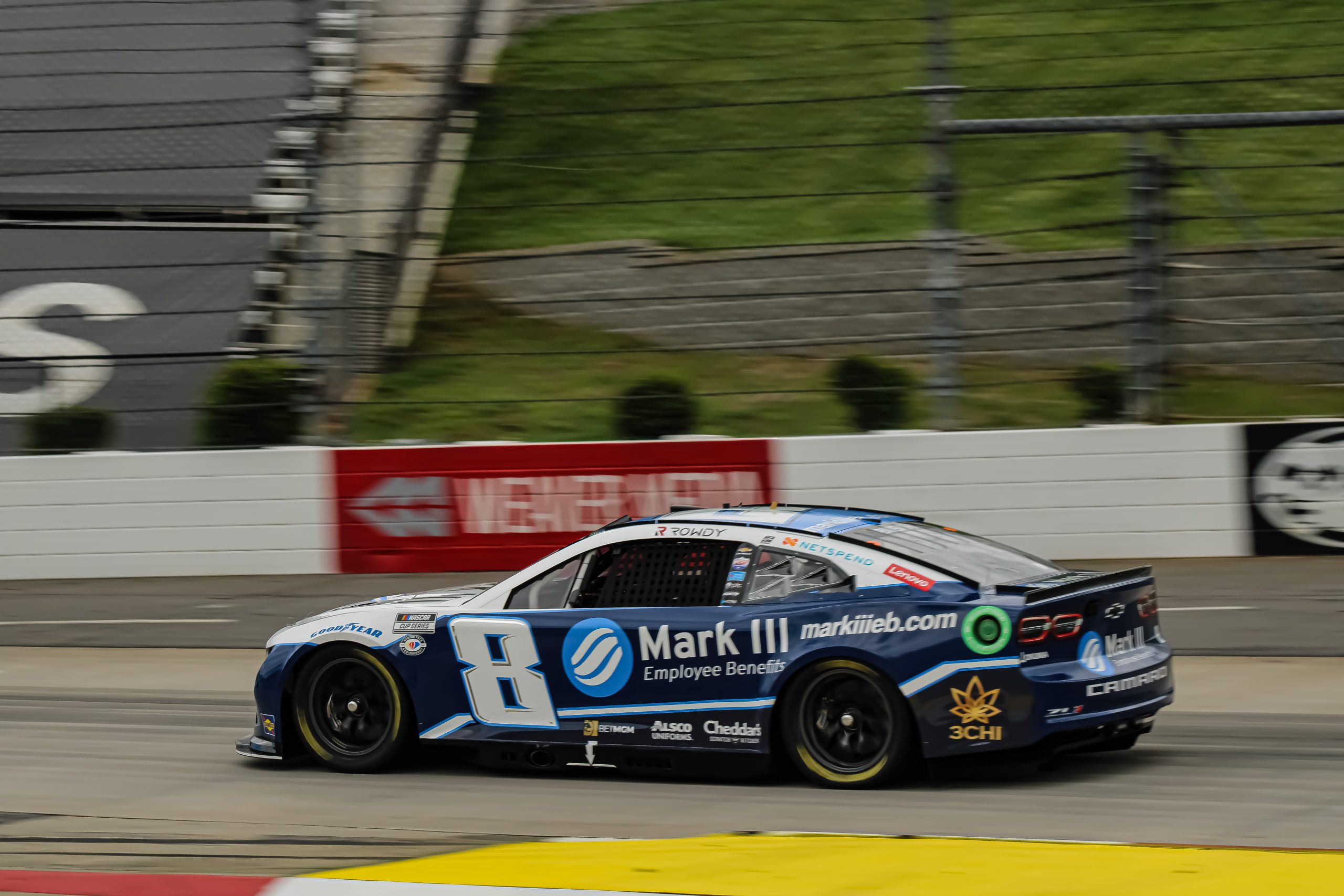
Busch acknowledges how little margin for error is afforded to Cup drivers and teams at Martinsville. (Photo: Trish McCormack | The Podium Finish)
The margin for error at Martinsville is so miniscule considering how the Gen-7 car’s components still challenge drivers, crew chiefs and mechanics. With so much to learn, the third Cup race with the latest version of the Cup car could go in either direction.
“Track position is everything,” he said. “The aero affects when you get behind guys makes it tough to move around and find grip in other grooves in order to make moves. It seemed like with the old car you could definitely follow a lot better and keep yourself closer to the guy in front of you so if he made a little, tiny mistake you could pounce on that and make a pass.
In recent years, Busch has turned Martinsville from a house of horrors to a beacon of hope regardless of the season and implications. Now, in his first Martinsville Cup start with the Chevrolet efforts since 2007, he hopes to apply what he has learned in recent years to secure another Bowtie victory at the paperclip.
“The racing there is pretty demanding,” Busch said. “I mean, you’re on the brakes all the time and steering all the time. You’re trying to feel that grip and not slip. You want to carry your speed as fast as you can while off the gas.
“The biggest thing that I learned that made me better at Martinsville is how fast can you go slow. You actually spend more of the lap off the throttle than you do on the throttle so it’s about figuring out how to go slow fast.”
Editor’s Notes
Jasmine Sharpe contributed to this feature directly on-site from Martinsville Speedway in Martinsville, Virginia.
Rob Tiongson is a 30-something motorsports journalist who enjoys sports like baseball, basketball, football, soccer, track and field and hockey. A Boston native turned Austinite, racing was the first sport that caught his eyes. From interviews to retrospective articles, if it's about anything with an engine and four wheels, it'll be here on TPF, by him or by one of his talented columnists who have a passion for racing. Currently seeking a sports writing, public relations, or sports marketing career, particularly in motorsports. He enjoys editing and writing articles and features, as well as photography. Moreover, he enjoys time with his family and friends, traveling, cooking, working out and being a fun uncle or "funcle" to his nephew, niece and cat. Tiongson, a graduate of Southern New Hampshire University with a Bachelor of Arts in Communication, pursues his Master of Arts in Digital Journalism at St. Bonaventure University. Indeed, while Tiongson is proud to be from Massachusetts, he's an everywhere kind of man residing in Texas.

